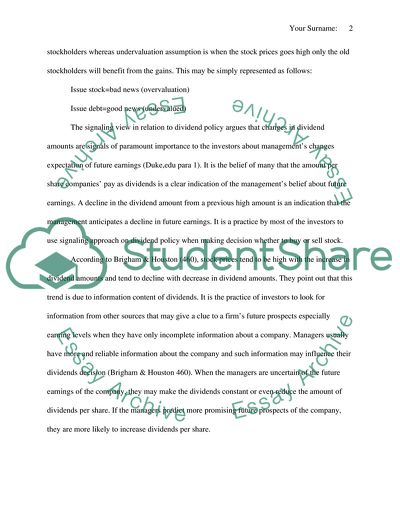Dividend Policy decisions and Capital Structure decisions in relation Essay. Retrieved from https://studentshare.org/miscellaneous/1568963-dividend-policy-decisions-and-capital-structure-decisions-in-relation-to-signaling-theory
Dividend Policy Decisions and Capital Structure Decisions in Relation Essay. https://studentshare.org/miscellaneous/1568963-dividend-policy-decisions-and-capital-structure-decisions-in-relation-to-signaling-theory.


